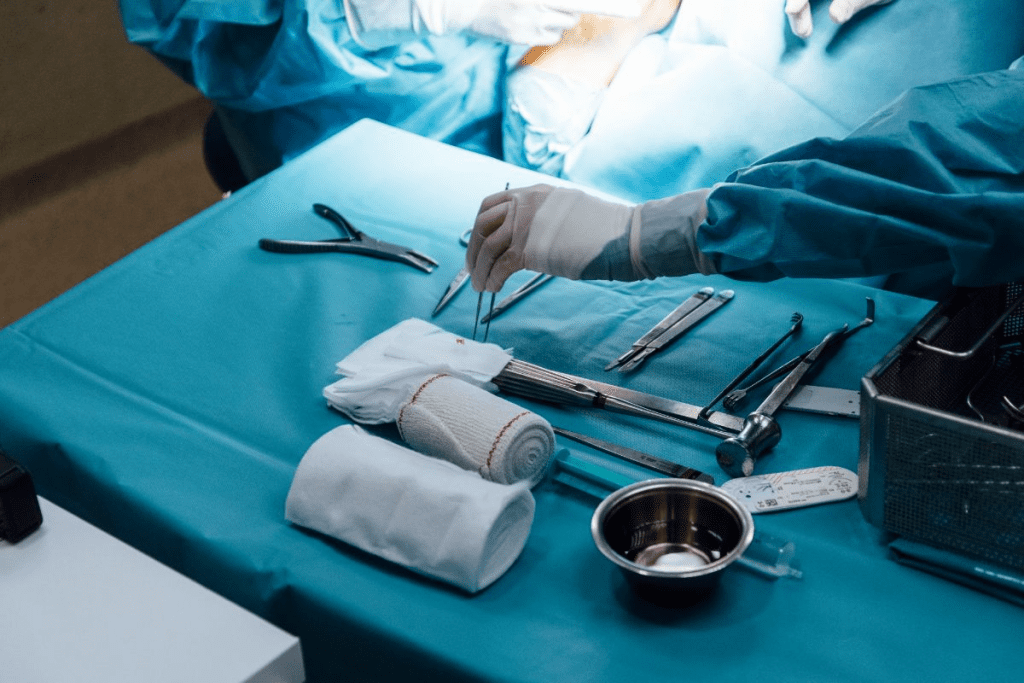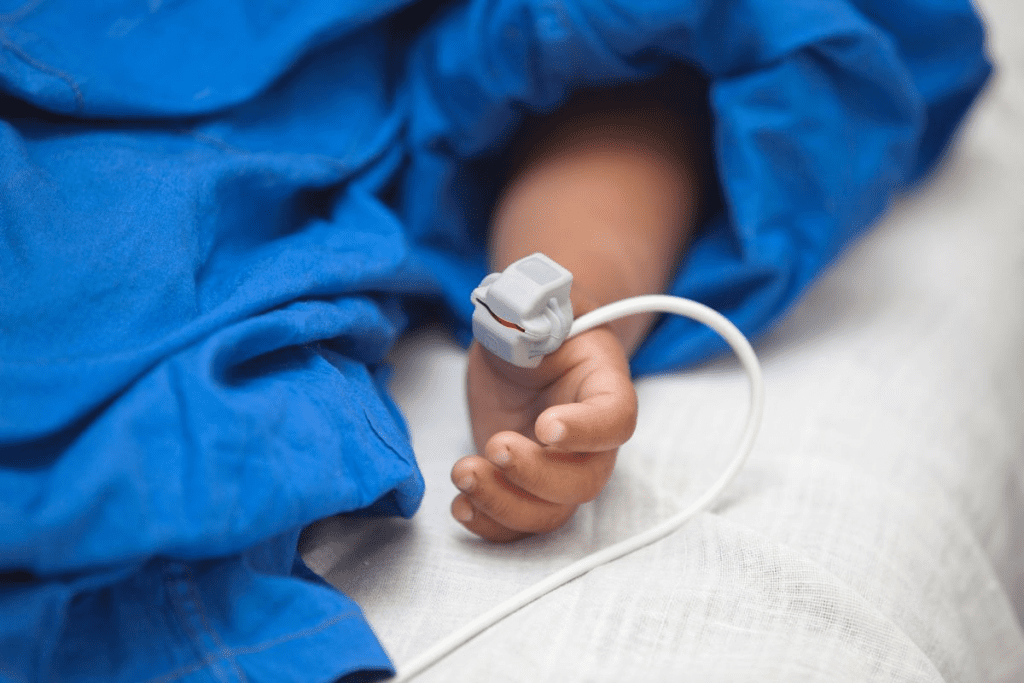Last Updated on November 14, 2025 by

Putting a 3-year-old to sleep for surgery is a careful process that often involves general anesthesia. This requires special medical techniques and close monitoring to ensure the child’s safety. It can be a worrying time for parents, but understanding the steps can make it less stressful.
The anesthesiologist will carefully review the child’s health history before surgery. Based on this, they will decide on the safest anesthesia plan, which may include sedatives to help the child relax before receiving general anesthesia.
During surgery, the anesthesiologist administers general anesthesia to keep the child asleep, free of pain, and unaware of the procedure. In some cases, a mild sedative may also be given before leaving the hospital to help the child remain calm and comfortable.
At Liv Hospital, our pediatric anesthesia specialists focus on precision, safety, and compassionate care so both children and parents feel supported throughout the process.
When a child has surgery, knowing about general anesthesia is key for parents. It makes sure the child is asleep and won’t feel pain. Our team of pediatric anesthesiologists specializes in caring for young children. They have lots of experience in giving anesthesia safely.

During pediatric anesthesia, our team watches the child’s vital signs closely. This ensures their safety during the surgery. Before the surgery, you and your child will talk to an anesthesiologist. This helps us plan the right anesthetic for your child.
About 1 in 7 children have general anesthesia before they are 3. Luckily, most pediatric surgeries are short, lasting under 3 hours. This reduces risks to their brain development. Knowing this can help ease parents’ worries about anesthesia side effects.
Our team of pediatric anesthesiologists is committed to top-notch care for young children. We follow the latest medical guidelines. We have a lot of experience in managing anesthetic general for kids. This ensures your child gets the best care possible.
The pre-surgery prep is key for your child’s safety and comfort. At our hospital, we stick to the best practices and latest research. This ensures a smooth experience for you and your child.
We do a detailed medical check-up before surgery. This helps us make an individualized anesthesia plan for your child. We ask about their medical history, allergies, and current health.
This thorough assessment helps us spot any risks. We then plan how to avoid them. Our commitment to quality care means your child gets the best.
Fasting before surgery is very important. We give you clear fasting guidelines to prepare your child. The fasting rules depend on the surgery type and your child’s health.
It’s vital to follow these guidelines to avoid any last-minute issues. Our team is here to help with any questions or concerns.
Emotional prep is as important as medical prep. We help you support your child during this tough time. Our goal is to make them feel more at ease and secure.
Talk to your child about what to expect in a way they can understand. Our team is ready to offer extra support and answer any questions.
We know how important it is for parents to be there during anesthesia induction. Being with your child can offer them comfort and reassurance. Our team supports parental presence and will guide you through it.
Having a parent there can help lower your child’s anxiety. We work with you to make sure you’re comfortable and confident during the induction.

We use different ways to give general anesthesia to toddlers. This depends on their age, health, and the surgery type. Choosing the right method is key to keeping the child safe and comfortable.
Mask induction is a common method. We use scented anesthetic gases to help the child relax and sleep. This method is often chosen for young kids because it’s less scary and less invasive.
The mask is gently put over the child’s nose and mouth. The anesthetic gases are given in a controlled way. Our skilled anesthesiologists make sure the child feels as little discomfort as possible.
Intravenous anesthesia is another method. The anesthetic is given directly into a vein. This method lets us control the dosage more precisely and adjust it as needed.
Our team is great at giving intravenous anesthesia to young kids. We make sure the injection doesn’t cause too much discomfort or worry.
When giving general anesthesia to toddlers, precise dosing is very important. The dosage must be carefully figured out based on the child’s weight, age, and health. This ensures their safety and comfort.
We use advanced systems to watch the child’s vital signs during the procedure. We make any needed changes to the anesthesia dosage in real-time.
Key considerations for precise dosing include:
By choosing the best anesthesia method and paying close attention to dosing and monitoring, we aim for the best results for our young patients.
Keeping young children safe during surgery is our top goal. We do this by following strict safety rules and managing risks carefully.
We use top-notch systems to watch our young patients’ vital signs during surgery. These systems check the heart’s rhythm, blood pressure, and oxygen levels. This gives us real-time info to make quick decisions.
We always put our patients first, but we also know about anesthesia side effects. These can include feeling tired, a sore throat, nausea, and vomiting. Our team is ready to handle these issues and care for our patients.
Most pediatric surgeries are short, under three hours. This is good because long anesthesia times can harm brain development. We aim to keep anesthesia times short to protect our young patients’ brains.
Our hospital has strict rules to keep patients safe during surgery. These include:
By sticking to these rules, we ensure the best care and safety for our young patients.
After surgery, we watch over your child in the recovery room. This is a key time to make sure they recover safely and comfortably. We help you know what to expect and when it’s okay to take them home.
After the surgery, it takes 1 to 2 hours for full recovery from anesthesia. Your child might be very sleepy and keep falling asleep. Our team is here to give personalized care and answer any questions you have about anesthesia and recovery.
We make sure kids get the right care after surgery. We keep a close eye on them for any problems and guide you on when it’s time to go home. Our skilled healthcare team is committed to top-notch care, ensuring your child is safe and comfortable before you leave.
General anesthesia keeps children asleep and pain-free during surgery. It makes sure they have a safe and comfortable experience.
Our pediatric anesthesiologists look at your child’s health history and current condition. They consider age, health, and surgery type to create a personalized plan.
We use mask induction with scented gases or intravenous anesthesia for toddlers. Our anesthesiologists choose the best method based on your child’s needs.
We monitor your child’s vital signs closely during surgery. We follow strict protocols and international standards for the highest care.
We talk about short-term side effects and long-term considerations of anesthesia. Most surgeries for kids are under 3 hours, which reduces risks.
We discuss if you can be there during anesthesia induction. We aim to make the experience smooth for you and your child.
Anesthesia usually leaves the body a few hours after surgery. We guide you on what to expect during recovery and when it’s safe to go home.
We watch over your child in the recovery room. This is key for safe and comfortable recovery. We provide personalized care and support.
Yes, general anesthesia is safe when given by skilled pediatric anesthesiologists. It’s used in about 1 in 7 children before age 3.
We help you prepare your child emotionally for surgery. Our goal is to make the experience as smooth as possible for both of you.
Subscribe to our e-newsletter to stay informed about the latest innovations in the world of health and exclusive offers!